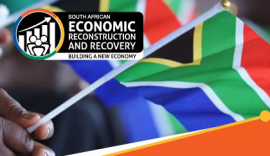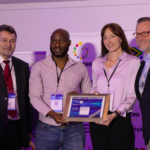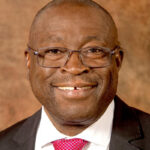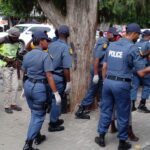October 2022 marks two years since the country instated the Economic Reconstruction and Recovery Plan – a plan that puts the focus on programmes being implemented by government and social partners to stimulate equitable and inclusive growth.
President Cyril Ramaphosa announced details of the plan, which aims to steer the country back to desirable growth levels in the aftermath of the Coronavirus pandemic, at a hybrid joint sitting of the Houses of Parliament, two years ago.
The Economic Reconstruction and Recovery Plan (ERRP) was developed, in the short term, to preserve lives through supporting livelihoods, distressed firms and financial systems and health care.
In the long term, the ERRP focuses on economic recovery and reconstruction to be implemented by government and social partners to stimulate equitable and inclusive growth.
Recently, government through the Economic Sectors, Investment, Employment and Infrastructure Development (ESIEID) cluster gave a progress report on interventions contained in the plan that was unveiled by the President on 15 October 2020 at a time when countries around the world were under the thumb of COVID-19.
While the world continues its recovery from the pandemic, South Africa’s economy has experienced economic stagnation which has put a strain on moves to tackle the historical structural economic challenges of inequality, unemployment and poverty. COVID-19 has exacerbated the country’s social and economic situation.
Owing to the fact that the world does not stand still, the update was given at a time when the Russia/Ukraine conflict—which begun in February– (and subsequent sanctions) have renewed the surge in global inflation, weighing on global demand.
Higher inflation is eroding purchasing power, leading to higher interest rates, discouraging and delaying investment and hiring. In addition, fuel prices have increased dramatically, mainly on the back of increasing oil prices due to a resurgence in global demand and the Russian conflict with Ukraine, among others.
The report focused on eight pillars implemented by various government departments. While the plan is a collaborative initiative from government and social partners, the update did not include the inputs of social partners.
Under the pillar of Macro-Economic Interventions, progress made included the raising of the licensing threshold for embedded generation. In June last year, government raised the licensing threshold for new embedded generation projects from 1 MW to 100 MW, thus removing the licensing requirement for generation projects up to 100 MW that are connected to the electricity grid. Subsequently, amendments to the country’s schedule 2 of the Electricity Regulation Act, which would enable the change, were published by the Department of Mineral Resources and Energy in August 2021.
Other achievements made include the restructuring of Eskom into separate entities for generation, transmission and distribution. Another achievement is the complete spectrum auction which government concluded earlier this year in April.In addition, work on the review of the policy framework and processes for work visas which had experienced some delays in implementation continues.
“Much progress has been made but we do believe that a lot of work needs to be done,” said the cluster.
Energy security
The report noted that Eskom plant performance has continued to deteriorate, implying increased risk of frequent and higher stages of load shedding. The other challenges experienced include the sabotage, theft and vandalism of energy infrastructure as well as additional capacity procurement delays due to permitting/regulatory approval delays and procurements process and environmental authorisations.
However, there were some positive steps taken. This includes the announcement of preferred bidders for bid window 5 of the Renewable Energy Independent Power Producer Procurement Programme (REIPPPP). The programme is aimed at bringing additional megawatts onto the country’s electricity system through private sector investment in wind, biomass and small hydro, among others. In bid window 5, a total of 25 preferred bidders, with a generation capacity of 2 583MW, were announced, with the projects’ commercial closure set for 2025.
In September, government announced that it has increased the wind energy allocation for the REIPPPP bid window six from 2 600MW to 3 200MW. The procurement allocations now stand at 3 200MW for wind energy and 1 000MW sought from solar energy suppliers.This was due to the urgent need for increased capacity in the electricity system as the country has been experiencing bouts of load shedding.
Employment
The update also showed that with an investment of R23.5 billion, government was able to cushion the unemployed during the COVID-19 pandemic. This was done through the Presidential Employment Stimulus (PES), which was government’s response to the devastating economic impact of the pandemic on jobs and livelihoods.
The PES forms part of the ERRP.
The programme has to date benefitted 960 972 beneficiaries, 84% of which are youth and 58% female.
A total of 726 638 (83% of target) jobs were created, 235 92 (75% of target) livelihoods supported, and 40 526 (67% of target) jobs retained. Using direct public investment, the PES supports job creation, job protection and livelihood support programmes, as part of a wider economic recovery progress.
Industrialisation and growth
Among the interventions named by government, is the renewed support to grow South African businesses through industrialisation, localisation and export promotion, helping businesses to thrive and expand.
To date, nine sector masterplans have been completed and are under full implementation while two others have been completed and are awaiting approval. In addition, eight masterplans are being developed in consultation with various stakeholders
The report also noted that approximately R80 billion has been invested in six of the masterplans.
In addition, as of 2022, R546.1 million was disbursed to support 58 small, medium and micro enterprises (SMMEs) which created 3211 jobs. In addition, R423.4 million was disbursed to 56 SMMEs. The report noted that the impact of masterplans are yet to be felt and that implementation must be complemented by structural reforms. Additionally, procurement delays were also flagged as a major concern.
Green economy and food security
Support for SMMEs and cooperatives in the green economy saw the creation of 13,034 work opportunities created in the natural resources management portfolio (including working for water; working for wetlands; working on fire, forestry and working for the coast). It also includes environmental protection and biodiversity infrastructure projects.
In terms of agriculture and food security, agriculture production volume, productivity and income increased from 2019/20 to 2020/21.
The report found that the number of people employed in the agricultural sector increased by 6.6% in the first quarter of 2022 from 792 000 people in the first quarter of 2021 to 844 000 people in the same quarter of 2022.
Of the 52 000 jobs created, 31 000 and 21 000 jobs were created for men and women respectively between the two quarters. During the same period in total, the agricultural sector had 249 000 females and 595 000 males compared to 228 000 females and 564 000 males.
Tourism
Achievements were also realised in the tourism sector, which is one of the eight areas covered in the ERRP.
The report noted a substantial increase in international tourist arrivals in the first quarter of 2022 compared to the first quarter of 2021.
“Total tourism international arrivals increased by 162% in first quarter of 2022, compared to the first quarter of 2021,” noted the report adding that the e-Visa system was also implemented in 14 countries, including China, India, Kenya and Nigeria, amongst others.
In the two-years of its existence, the plan is changing the country’s landscape.












